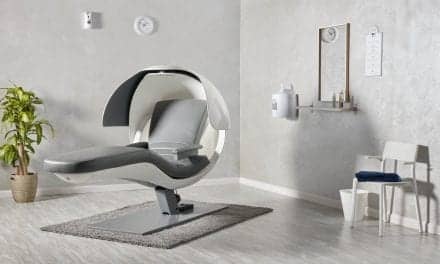Enterprising companies employ employers to reach people who would otherwise never encounter sleep specialists.
By Jane Kollmer
The relationship between sleep and overall health has become better established in recent years. Yet, navigating the health system to get help for sleep issues has not been particularly easy or patient-centric.
One plausible path for would-be patients goes something like this. First, they see a primary care physician, who determines they are at risk for a sleep disorder. Then they are referred to a sleep specialist. After a consult, the sleep specialist might refer the patient to a sleep disorders center for a sleep study, says Dominic Munafo, MD, chief medical officer at BetterNight. The patient returns to the sleep specialist for another consultation afterward, perhaps boomerangs into the sleep lab again, before being referred to, in the case of an obstructive sleep apnea diagnosis, a durable medical equipment company for a CPAP. “Ultimately you get the care that way. But that’s a lot of referrals,” Munafo says. “It’s very siloed. It tends to be very expensive, and it’s time inefficient.”
That pathway depends on the patient having experienced sleep issues so disruptive they merit alerting a healthcare professional, as well as the patient’s belief that the sleep difficulties can improve. But people who are dismissive of symptoms or skeptical of certain therapies (such as prescription drugs for insomnia or CPAP for sleep apnea) never even step into a sleep specialist’s doors.
So enterprising companies are instead sliding in through office doors, sidestepping the healthcare referral system in favor of reaching people through their employers. These are people who in many cases would have otherwise remained undiagnosed their entire lives.
“Lack of awareness is the biggest barrier to reaching people with an undiagnosed sleep disorder,” says Jonathon Lobbins, CEO at Primasun, a newly launched joint venture between ResMed and Verily that works with employers and healthcare providers to identify populations at risk and connect them to sleep specialists.
The Employer Angle
“Employers themselves want to offer competitive benefits for their employees, especially if it’s going to improve the health of their employees because they know that decreases healthcare utilization,” says Karen Underwood, MD, MBA, chief medical officer and co-founder at Resonea Inc, marketers of the DROWZLE Sleep Health Program, which can help with corporate wellness, industry safety, consumer sleep apnea awareness, and more, according to the company’s website. “Healthcare dollars go down and productivity goes up when you help employees get the help they need.”
Sleep medicine company BetterNight has collected evidence of this. Around 2014, when BetterNight entered the employer space, it built an online cognitive behavioral therapy program that screened for sleep conditions and provided tips around identified issues. They then studied the program in five US workplaces that were a good reflection of the demographics of the US workforce (in terms of age, body mass index, the prevalence of insomnia, and undiagnosed sleep apnea risk).
“What we found was really quite amazing,” Munafo says. “Three-quarters of the employees that we screened had at least one significant sleep issue; about 50% of the employees had as many as two or more significant sleep issues; and about a third of the employees had three or more significant sleep issues.”
Employees who completed the online sleep health program benefited themselves and their workplaces. Their average productivity increased 43%. Workers meeting insomnia criteria declined by 89.7%. They were less sleepy during the day.1
Several white papers also connect improved employee sleep to advantages for employers. For example, commenting on a Frost & Sullivan survey of 500 adults being treated for obstructive sleep apnea, Nathaniel Watson, MD, MSc, writes, “After diagnosis and treatment, patients reported longer average nightly sleep duration, dramatic improvements in sleep quality, and greater productivity.”2
Sleepio, an automated digital sleep improvement program comprised of cognitive and behavioral techniques, recently evaluated healthcare costs and utilization between Sleepio users and a matched control group of health plan-enrolled employees from a large financial services company. It found statistically significant reductions for Sleepio users for inpatient medical costs and the number of days admitted to acute care. The findings are particularly notable, states Sleepio marketer Big Health Inc in a white paper, given the study sample had relatively mild sleep difficulties.3
Sleep Medicine Employer Offerings
Virtual sleep health programs help employers offer the full spectrum of sleep care to employees. They typically include education, such as assessments or questionnaires, that help employees recognize their sleep issues and offer evidence-based tips to improve sleep quality.
“By educating employers and employees on sleep disorders, and providing guidance from initial evaluation to treatment, we can expand critical access to life-altering sleep care,” Primasun’s Lobbins says.
Many employer-based programs connect patients with sleep telemedicine providers that have nationwide coverage. This matters because when patients don’t have a direct connection to providers, they tend to fall off, Underwood says. “By reducing barriers and increasing access, we empower patients to take their healthcare in their own hands,” she says. “It’s all about connecting the dots, reducing friction, and hopefully moving more people to therapy.”
Companies also help employees stay on track with their treatment. BetterNight’s data analytics software, Clarity, results in CPAP therapy reports that detail the management not only of individuals but also of patient populations. BetterNight’s sleep coaches connect with patients who are struggling in real-time to help motivate and re-educate. This combination of technology and skilled personal coaching accounts for average adherence rates of 77%.4 Munafo says, “Even with the virtual nature of the coaching, we still have CPAP adherence that is twice the national level.”
Nox SleepCharge is another program that brings sleep medicine to employees, and it has been doing so for more than 10 years. All screening, testing, diagnosis, treatment, patient training, support, and monitoring is delivered for 35+ sleep conditions (including sleep apnea, insomnia, circadian rhythm disorders, and sleep-related movement disorders) by one integrated care team. It stays with each patient through their sleep journey as long as they are eligible via their employer benefit program, plus it has a seamless way for individuals to continue care should their plan coverage change, says Heidi Anderson, president and chief growth officer at Nox Health.
With SleepCharge, less than 10% of people get lost after the first year, according to Anderson, citing unpublished data from Nox Health clients. Ongoing adherence drives cost savings, clinical outcomes, and happy, healthy people, she says.
“There are a lot of CPAP machines sitting under the bed or in the closet collecting dust. And part of that is because it’s a behavior change that’s needed. You really need to have support to adopt that new treatment behavior,” Anderson says.
Two newer workplace sleep medicine offerings are by Primasun and Resonea.
Backed by ResMed and Verily, Primasun uses a preventative care model that identifies populations at risk and connects patients with certified sleep physicians who diagnose and treat obstructive sleep apnea, clinically evaluate patients with insomnia symptoms, and provide guidance to improve sleep hygiene.
Through its platform that combines virtual care visits, integrated treatment plans, personalized coaching, and educational resources, patients take a health assessment that evaluates their sleep concerns before they’re connected virtually with a sleep physician, which is then followed by an at-home sleep test.
Resonea had its DROWZLE Sleep Apnea Pre-screening Device cleared by the US Food and Drug Administration in 2019. Its employer offering, the DROWZLE Sleep Health Program, is a self-guided program designed to educate, motivate, and measure progress toward better sleep health for employees.
Impact on Sleep Professionals
Primasun wants to generate more awareness of sleep disorders and their impact on health outcomes while ensuring patients have proper access to treatment and sleep care resources, Lobbins says. Sleep labs and sleep physicians will remain central, critical players in improving this access.
“After all, the more awareness achieved and patients served, the better for the business of sleep medicine—and the health of society at large,” he says.
Many more people need sleep care than there are sleep providers, according to Nox Health’s Anderson. “We are simply removing barriers to care by seamlessly connecting them to the care that they need, whether that’s going to a brick-and-mortar clinic or accessing care through telehealth,” she says.
Underwood says the evolving field of sleep medicine means being able to meet patients where they are. She says, “Using innovative tools and technology allows us to connect with patients who may not have the opportunity to get care otherwise.”
Jane Kollmer is a freelance writer based in Chicago.
References
1. Munafo DA, Loewy DH, Kavy G, et al. Online cognitive behavioral therapy improves productivity and sleep health in the workplace. IHJP. May 2021;13(1):7-19.
2. Watson NF. Health care savings: The economic value of diagnostic and therapeutic care for obstructive sleep apnea. J Clin Sleep Med. 2016 Aug 15;12(8):1075-7.
3. Miller CB, Carl JR, Henry AL, Baker L. A health economic evaluation of Sleepio at a Fortune 500 Company. May 2022.
Illustration 24072222 © Mopic | Dreamstime.com





